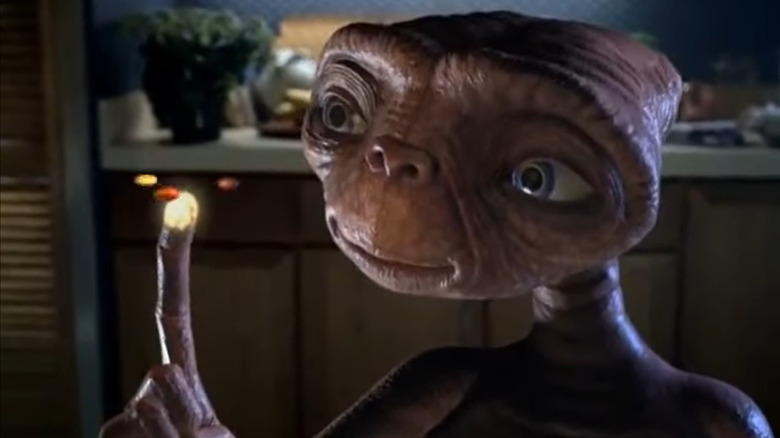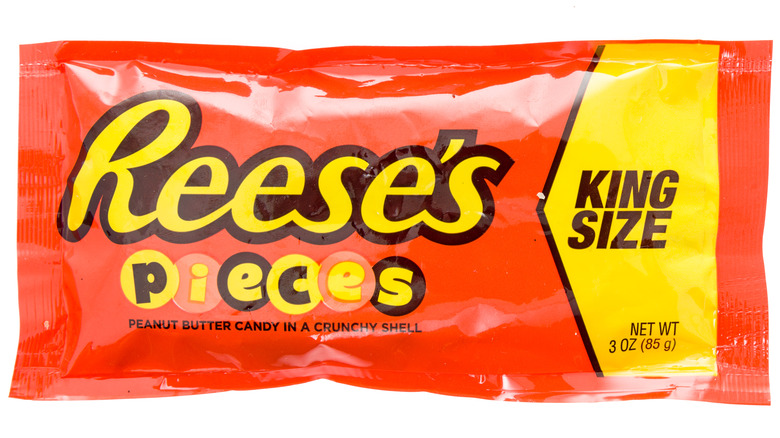Did E.T. Really Help To Save Reese's Pieces?
Sci-fi classic movie "E.T." is full of iconic scenes, but nothing quite compares to the one where young Elliot lures his new friend E.T. back to his house with a trail of Reese's Pieces. Though it lasted only for a moment in the film, the scene ended up changing the entire trajectory of Reese's Pieces' future within the candy industry (via The Daily Meal). When Hershey's initially released Reese's Pieces, the candy was met with moderate success that soon turned into rapidly declining sales. The life of the peanut butter-flavored candy was therefore expected to run its course. But much to Hershey's luck, the opposite happened — and it's all thanks to the movie.
According to People, "E.T." not only caused Reese's Pieces sales to increase, but led sales to triple in less than two weeks following the premiere of the movie. With "E.T." becoming a box office hit, it certainly had a lot to do with the newfound success of the candy, but it was also the accompanying marketing campaign that truly solidified its popularity. Hershey's went all out with the movie tie-in and began advertising Reese's Pieces as "E.T.'s favorite candy" through posters, stickers, and commercials, even making the product available at movie theater concession stands so that audiences could get the full experience.
Steven Spielberg originally wanted to use M&M's in 'E.T.'
It's hard to imagine E.T.'s favorite candy being something other than Reese's Pieces, but if it weren't for confectionery company Mars turning down the product placement offer, it would've been M&M's instead. People reports that the original screenplay of the film, as well as the novel, both featured M&M's specifically. Hershey Community Archives further elaborated that Universal Studios and director Steven Spielberg saw this detail as an opportunity for joint promotion, and contacted Mars, the brand behind M&M's. When they declined, Universal Studios then approached Hershey's, due to a suggestion from the son of Universal Studios' vice president at the time.
Despite the fact that the film distributor had never previously heard of Reese's Pieces, the shape of the candies were similar to that of M&M's. However, the million-dollar deal was met with reluctance all around. Not only was Reese's Pieces already on the decline, the potential for the movie's success was still up in the air. In the end, however, the collaboration ultimately ended up being a worthwhile risk for both Hershey's and Universal Studios and the scene lives on in infamy to this day.

